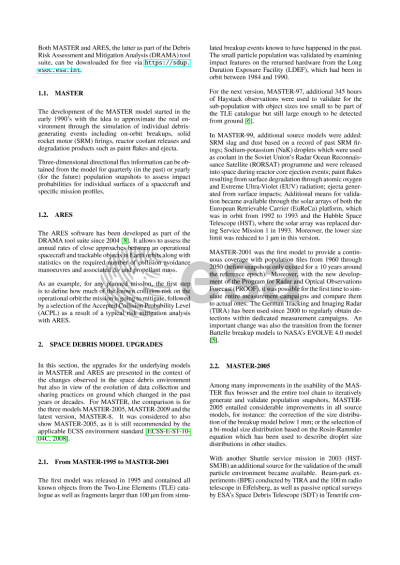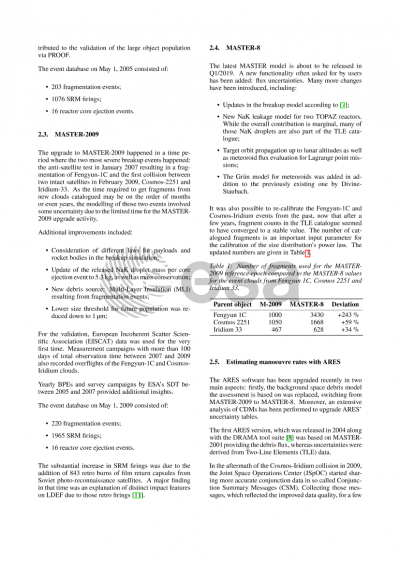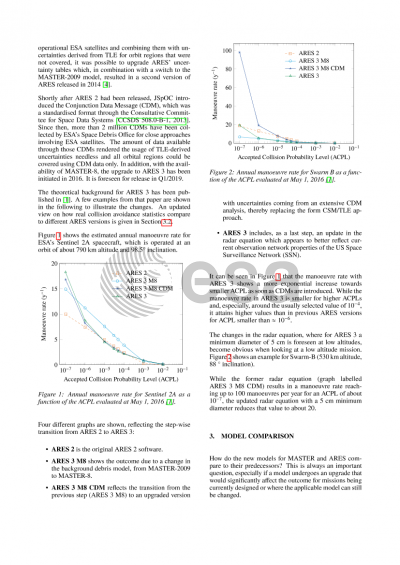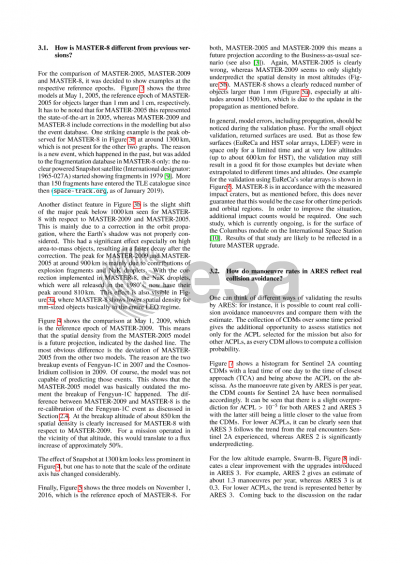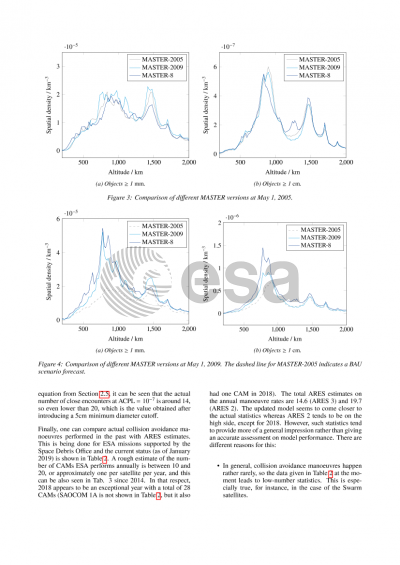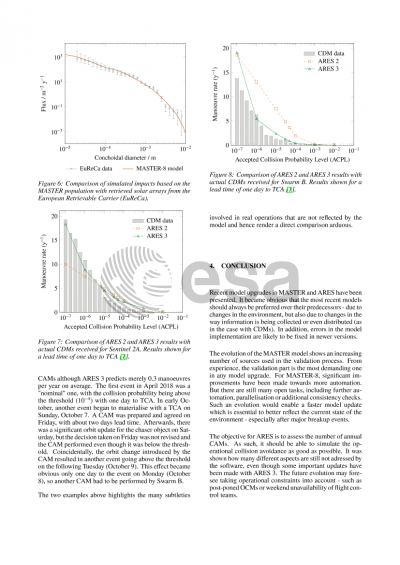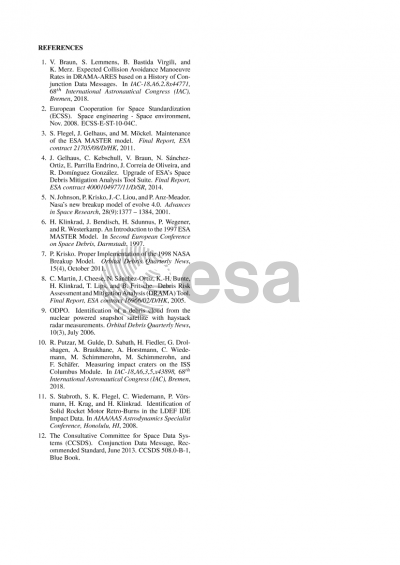Document details

Abstract
The Meteoroid and Space debris Terrestrial Environment Reference (MASTER) model has undergone a significant model upgrade in the recent past. One major outcome is the re-calibration (from MASTER-2009 to the new MASTER-8 model) of the Fengyun-1C breakup event from 2007 which resulted in an increase in flux of approximately 50% in the vicinity of its breakup altitude around 850 km. This clearly has an impact for any mission that is designed to operate in that altitude regime from the perspective of risk assessment.
In this paper, the impact on risk assessments due to model upgrades shall be discussed based on the MASTER-2009 to MASTER-8 example. How does flux change for different orbits but also for the assumed future evolution of the environment? How would the change in the MASTER model affect currently planned missions? Moreover, the Assessment of Risk Event Statistics (ARES) tool utilises MASTER's flux output to come up with an estimate of the expected collision avoidance manoeuvre rate. Besides the change in the background debris model, ARES saw another upgrade in its uncertainty database, which is now entirely based on information from Conjunction Data Messages (CDM) compared to Conjunction Summary Messages (CSM) and Two-Line Elements (TLE) in the former version. The impact on the manoeuvre rate is also highlighted in this paper.
Preview

